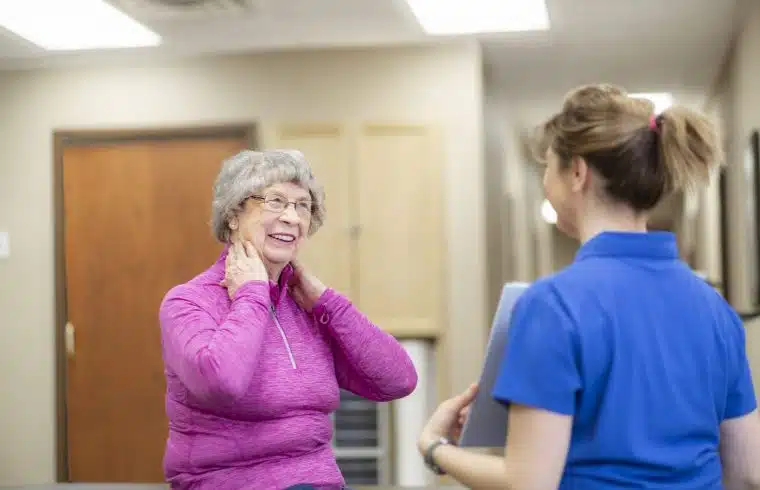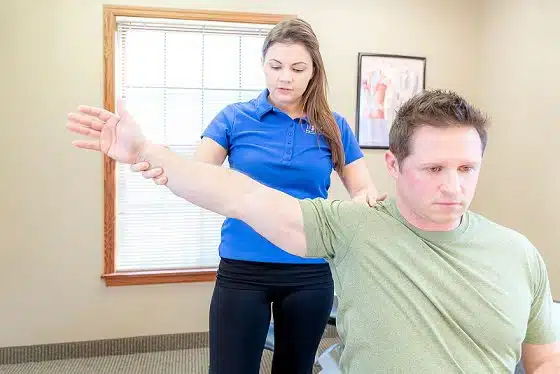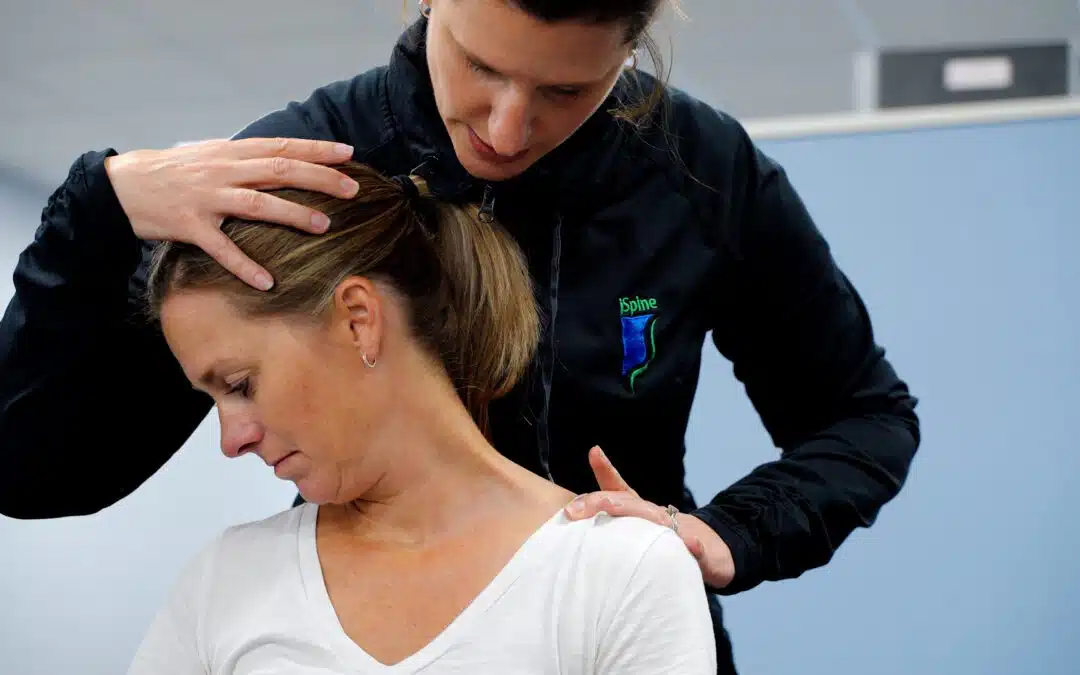What are Muscle Release Techniques and How Can They Help You?
Muscle release techniques are hands-on soft tissue methods for pain management and mobility therapy. Your expert iSpine Rehab Clinics therapist will use a variety of techniques to provide input to your muscles and tissues that promotes circulation, relaxation, and reduced sensitivity to movement. This article will outline the different types of techniques and how they can benefit your rehabilitation efforts.
Muscle Release Therapy Techniques
There are many different muscle release techniques performed by manual therapy professionals.
- Myofascial Release is a common soft tissue therapy modality. It involves a gentle, consistent stretch aimed at fascia—the network of connective tissue in your body.
- Active Release Technique is performed deeper into the muscle tissue to target scar tissue adhesions in muscles, ligaments, and tendons by creating pressure, tension, and active movement of the muscle.
- Instrument Assisted Soft Tissue Mobilization (IASTM) or Graston Techniques involve using instruments to target these soft tissue dysfunctions.
- Joint mobilization, PNF (proprioceptive neuromuscular facilitation), and general assisted stretching are also commonly used to restore joint movement and reduce pain.
Manual Therapy Myths & Facts
Pain research is beginning to change the way clinicians think about manual therapy. We once believed that manual therapy techniques had the power and potential to change tissue anatomy, break muscle adhesions, lengthen tissues, and correct faulty joint positions that drive the pain experience. We now know that the longer pain persists, it’s much less about the tissues and more about a sensitive nervous system.
Manual therapy techniques are now believed to affect the nervous system even more than the tissues themselves. While we may not quite be creating length to fascia, breaking scar tissue, or moving joints into place, manual therapy provides benefits of touch, relaxation, and graded movement that the nervous system responds favorably to. This input promotes the production of dopamine and endogenous cannabinoids to feel good and reduces nervous system excitability. The great news about this is that it doesn’t matter that much which technique is used, it’s more about finding techniques that pair with improved comfort in movement.
What can I expect from a muscle release session at iSpine Rehab Clinics?
A skilled clinician will spend time assessing your movement limitations and where you have increased tissue sensitivity. This will help determine which techniques will work best to begin with. They may use gentle stretching, assistive movement, or direct techniques to the muscles and fascia. They may use their hands or instruments to create pressures and tensions in the tissues.


Generally, if the body is highly sensitive the movements are small and the pressures are gentle at first. As sensitivity reduces and movements become more comfortable, the techniques progress. Ultimately, exercise load or resistance is added to the body to progress further. Ultimately, manual techniques are used only for a short time to allow the body to become less sensitive to movement therapy.
I feel great, why doesn’t it last?
Manual therapy input to the nervous system may result in transient, temporary effects at first and it may be frustrating that muscle tightness and pain returns. We do see that with consistency and progression more permanent changes can be made. That is why it is important to combine a daily movement habit and your own techniques at home to get the best and lasting results. It’s also important to work with your therapist in identifying what triggers and contributors may be escalating your pain and muscle tension as well.
How do you do your own muscle release techniques?
Once you find what works for you, it is important to be able to replicate this at home for daily use. Using stretches, exercises, and muscle release together may allow you to move more comfortably and be more motivated to stay moving. Tennis ball, theracane, foam rollers, and other tools may be recommended and your iSpine Clinic’s therapist will teach you how to use muscle release and exercise together as a home routine.
I’m interested—what are my next steps?
iSpine Clinics has clinicians on staff who specialize in muscle release therapies—a great first step is setting up a Rehabilitation and Physical Therapy Consultation. In this session, our specialists will work with you to create a customized care plan that will meet your unique needs. Our team of experts knows that one size does not fit all in treating musculoskeletal pain. We have many tools in our toolbox to achieve the desired results—including various muscle release techniques. If you think you’re a good candidate, you can bring it up in your initial consult to learn more! If you have musculoskeletal pain or lack of mobility, we hope to hear from you soon!


